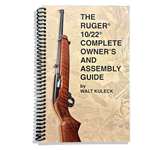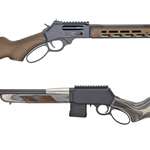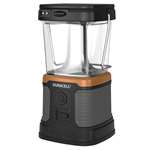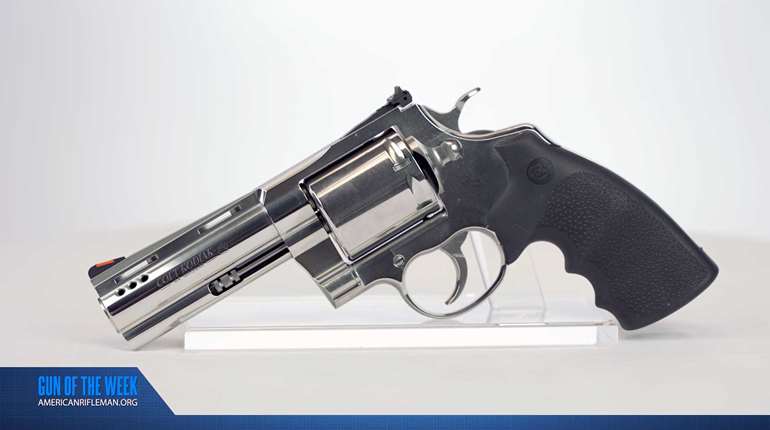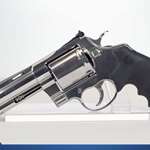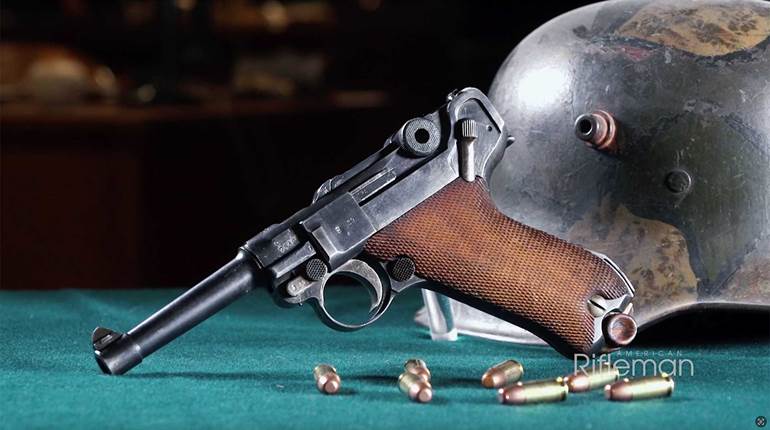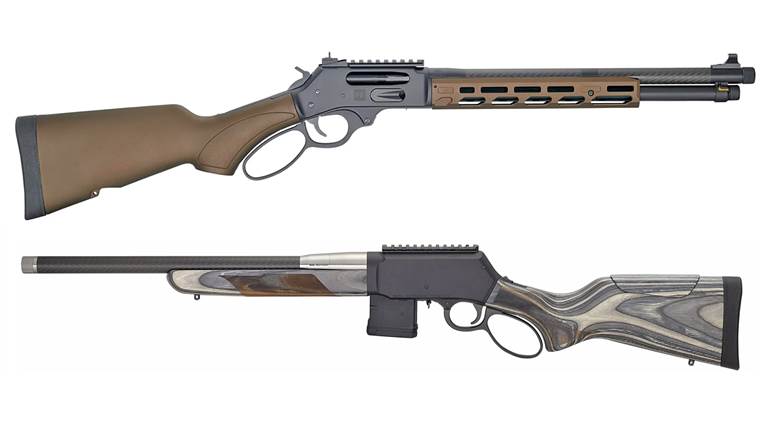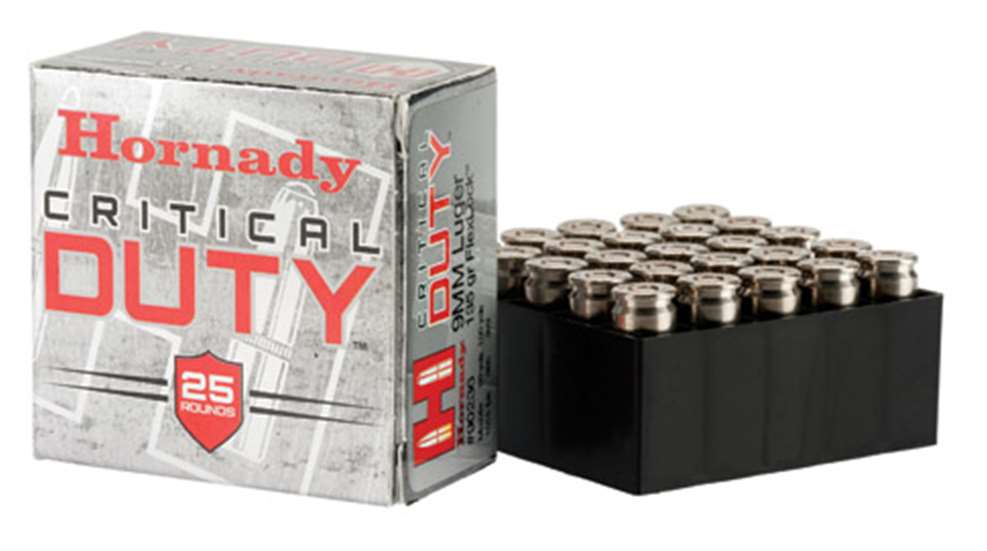
There are few assurances or guarantees in life. When it comes to self-defense, that already-low number dwindles. Why? There are countless factors that affect where, when and with whom the life-threatening encounter will occur, and each changes the demands placed on defensive ammunition.
Take something as simple as victim-offender relationship, for example. From 1976-2005, “In 14% of all murders, the victim and offender were strangers,” explained the Bureau of Justice Statistics (BJS). Further, of the estimated 3.7-million burglaries committed per year between 2003 and 2007, “Offenders were known to their victims in 65% of violent burglaries; offenders were strangers in 28%.”
From these statistics, one can conclude that the offender will likely be a spouse or other family member, boyfriend/girlfriend or other acquaintance, and not a random stranger. The “closeness” or familiarity element undoubtedly increases the probability that the offense will occur at, or inside, a dwelling, being the result of a dispute, robbery or botched burglary. Inside a residence, engagement distances are typically short, and the primary barriers a bullet might be called upon to defeat are clothing, wallboard, plywood, two-by-four boards and glass—i.e., mostly common building materials.
With the exception of interrupted burglaries, though, criminals who select victims at random are more likely to assail outside the home during a robbery. “More than half of the robberies occur on streets and highways,” explained Curt R. Bartol in Criminal Behavior: A Psychosocial Approach, Fifth Edition. Outside the home, not only can shot distances vary greatly, but to the previous barrier list can be added auto glass and sheet metal, both of which apply to robberies and encounters “on streets and highways.”
Victim-offender relationship is but one of the myriad elements that can be used to gauge criminal trends; in fact, statistical data proves that even air pollution, noise, ambient temperature and moon phases affect the proliferation of crime and drive deviance. Simply stated, it is impossible to know the circumstances—to include location, shot distance and angle, barriers (even clothing), timing (day or night) and size, physical strength and mental condition of the aggressor—of a life-or-death encounter beforehand, so the ideal defensive load, then, would stop any criminal threat anywhere at any time.
Before Critical Duty
Until Critical Defense (Sept. 2009, p. 72) was unveiled in 2009, Hornady’s go-to defensive bullet was the eXtreme Terminal Performance (XTP), which was, and still is, loaded in the company’s Custom and TAP FPD lines. Introduced in 1989, it is used as often for hunting and competition as it is for personal protection purposes.
As non-bonded projectiles, XTP bullets achieve retained weights upward of 95 percent—for deep penetration—through the use of progressively thickening jackets that are “mechanically” locked to the swaged lead core. Though typically hollow-point in configuration, flat-point XTPs exist, too. Concerning the former, precise nose folds and oversize cavities work in unison to ensure uniform, consistent expansion at lower velocities, yet maintain integrity at high velocities.
Like many hollow-point projectiles, though, the cavities of XTPs can clog when penetrating clothing, and heavy garments in particular. The result is minimally or non-expanded bullets with reduced energy dispersion, limited organ and tissue damage/disruption and potential overpenetration. The problem is more apparent in compact, short-barreled handguns in lesser chamberings that are popular for concealed carry, where velocities are relatively low.
Hornady remedied the hollow-point dilemma with Critical Defense’s non-bonded FlexTip eXpanding (FTX) bullet. To prevent the cavity from clogging with fabric, the company’s chief ballistics scientist, Dave Emary, utilized a technology pioneered in the company’s LEVERevolution line—the proprietary red, elastomeric polymer. Not only did the material, which varied slightly in composition from that in LEVER-evolution, prevent debris from blocking the cavity, its “pseudo hydrostatic” nature, as Emary described it, contributed to uniform expansion by imparting equal pressure throughout the cavity.
Unlike the XTP, the FTX’s weight retention—upward of 99 percent (typically only the tip is absent)—is controlled solely by jacket taper, which progressively thickens toward the base. There is no mechanical “InterLock” ring to prevent jacket-core separation; at the lower velocities of Critical Defense it’s unnecessary. Emary mandated that penetration not exceed 12"; a depth sufficient to damage vital systems and structures even from side angles, and in which most of a projectile’s energy is dispersed, thereby limiting the risk of overpenetration. At the nose, though, the jacket mimics the XTP’s in that expansion—1.7-times caliber with distinct petals—is “pre-programmed” via six precise folds.
Improving the terminal performance of low-velocity cartridges in short-barreled handguns—most noticeably .380 ACP, 9 mm Luger and .38 Spl.—was the primary design intent behind Critical Defense; however, the line has since grown to include more potent defensive chamberings, such as .357 Mag., .40 S&W, 10 mm Auto and .45 ACP, as well as unconventional ones, such as .44 Spl. and .44 Mag. Regardless of chambering, all perform similarly with regard to terminal ballistics.
With Critical Defense, Emary also addressed the issue of excessive recoil, which is especially prominent in lightweight carry handguns. Since high velocities are unnecessary to achieve the desired terminal ballistics, even through clothing, light-for-caliber FTX bullets were selected. Lightweight projectiles, combined with faster-burning propellants—necessary to achieve a more complete burn in oftentimes much abbreviated barrels—enabled Emary to reduce the recoil impulse—a welcomed attribute.
Critical Defense was optimized for close-range confrontations with clothing as the primary barrier encountered. It was not intended to fulfill all eight penetration tests for “service” ammunition, as outlined in the FBI Technical Evaluation Plan (TEP); that’s where Critical Duty comes in.
Coming of Critical Duty
“Critical Duty was developed with law enforcement officers and their tactical requirements in mind,” explained Neil Davies, marketing director for Hornady. “That being said, there are also civilians who desire rugged ammunition and bullets for personal defense.”
Developing Critical Duty proved to be an immense undertaking. “It was an evolutionary process,” said Emary. “Essentially it was the culmination of a decade-plus of experimenting. It was troublesome getting the bullet to provide overall good performance on all FBI barriers, as each interacts differently with the bullet, as well as has a different effect on the bullet. The real problem was balancing the overall design to get good performance on everything.”
The resulting bullet was named FlexLock. “Critical Duty’s FlexLock bullet has a number of apparent, and some not-so-apparent, design features that allow it to function the way it does,” said Emary. “They work in unison and, to some extent, are compromises over what they could be in order to work on each FBI barrier test consistently.”
Unlike its primary competitors’ defensive bullets, the FlexLock is not bonded. “From the outset we decided not to bond the bullets,” said Emary. “This led to a lot of experimentation with jacket designs.”
Two FBI penetration tests in particular illustrate that he’d chosen wisely. One test requires shooting through “auto glass” (A.S.1, 1/4" laminated safety glass is angled at 45 degrees to the horizontal to simulate a windshield angle, and the shot is fired with a 15-degree offset) from 10 ft.; the other mandates a repeat of the aforementioned test, except the shot is fired straight-on at 20 yds. A gelatin block that is covered with “light clothing” is placed 18" behind the barrier.
“Glass is an extremely hard and abrasive barrier,” explained Emary. “It crushes and mangles the noses of the bullets and has a tendency to grab the jacket and allow the core to squirt out. With bonded bullets, all this crushed and mangled jacket and core material tries to hang on to what is left of the bullet and creates a large and unpredictable frontal area. The result is usually not meeting the required 12" of penetration in gelatin. The FlexLock bullet is designed to shed all this damaged material, and it looks like a wadcutter after penetrating glass and gives predictable penetration in 10-percent gelatin.”
Foregoing bonding required innovative thinking to ensure integrity against the prescribed barriers while also achieving proper penetration, which the FBI TEP describes as follows: “It is desirable that the service projectile consistently penetrate an average of 12" to 18" throughout gelatin tests, with no shot less than 12" and no shot greater than 18" … .” Emary returned to Hornady’s roots for the solution; he combined a larger-than-normal mechanical locking ring—InterLock—with a high-antimony lead core, which is preferable in applications calling for high-retained weight. The latter could not be utilized if bonding was to take place, thereby reducing control over bullet deformation and expansion for optimal performance in gelatin. A sectioned FlexLock reveals an unusual, disproportionately heavy midsection with the lead-alloy core in a quasi-arrowhead/hour glass shape; it’s easy to understand how jacket-core slippage is prevented.
Unlike Critical Defense’s FTXs, Critical Duty’s FlexLock bullets are noticeably heavy-for-caliber. For example, in the 9 mm Luger and 9 mm Luger +P loads a 135-gr. version is used, and in .40 S&W the projectile weighs 175 grs. (which meets the Bureau’s call for a .40-cal. projectile “no less than 155 grs, nor exceed[ing] 200 grs.”). “Heavy for caliber is a function of the barriers that are expected to be defeated and yet have the bullet still achieve a minimum of 12" of gelatin penetration,” said Emary. “Lightweight bullets do not have the momentum to defeat barriers and achieve the required penetration depth.” Because of the bullet weights and the standard propellants used, recoil is more noticeable than with Critical Defense; however, it is by no means intolerable.
Hornady’s flexible, red elastomeric tip material is used on the FlexLock. Whereas FTX tip’s primary duty was to prevent cavity blockage, with secondary service aiding uniform expansion, the FlexLock does the aforementioned, as well as ensuring the cavity doesn’t collapse in upon impacting steel. “This is where the FlexTip material shines, “ Emary said. “The combination of the jacket taper design and FlexTip material prevents the nose from collapsing and forces the nose of the bullet to deform around the tip. You end up with a bullet looking like a toadstool. In essence, the bullet is ‘pre-expanded’ by the steel and performs just like a normal bullet in gelatin.” Reportedly, typical expansion across-the-board is 1.487 times caliber in 9 mm Luger, 1.617 in 9 mm Luger +P and 1.415 in .40 S&W. Average weight retention percentages, excluding the glass tests, are 99.8, 99.4 and 98.8, respectively.
Critical Duty also borrows from Critical Defense in its use of nickel-plated cases and clean-burning propellants with flash deterrents added. The former enables easier chamber checks in low-light conditions, as well as enhances feeding, extraction and corrosion-resistance, while low-flash propellants preserve vision at night. Since Critical Duty was developed around full-size handguns, standard propellants—unlike Critical Defense’s progressive type—were utilized.
Put To the Test
Earning an FBI contract for “service” ammunition requires fulfilling the numerous conditions outlined in the TEP. Of the “Phase 1” requirements, though, the most difficult for manufacturers to meet are likely the penetration tests, with each simulating a real-world threat. It was for this very reason that I traveled to Hornady’s Grand Island, Neb., facility last fall—to witness Critical Duty in action. All testing was conducted using a Glock 17 (9 mm Luger) firing the 135-gr. +P load.
Of the eight tests, arguably the most difficult are “steel” and “auto glass.” It was here, respectively, that the evaluation began. For the steel test, two sheets of hot-rolled automotive sheet metal with a galvanized finish are spaced 3" apart, a calibrated gelatin block is draped with light clothing and placed 18" behind the metal, and the shot is taken from 10 ft. Propelled at 1165 f.p.s., the FlexLock easily pierced the steel layers and heavy clothing, and it attained a depth of approximately 13" in the ballistic gelatin. The recovered bullet weighed 133.1 grs. and measured 0.501" at its widest. As Emary had stated, it indeed resembled a toadstool. As for the glass test (described previously), which Emary equated to shooting through 1/4" of concrete, the bullet retained 67.1 percent of its original weight and expanded to 0.443", yet it still penetrated about 13¾" of gelatin. A second glass test was unnecessary.
Subsequent tests revealed FlexLock’s performance against bare gelatin, heavy clothing, plywood and wallboard, respectively. Against bare gelatin, which effectively represents a shirtless subject, from 10 ft. the FlexLock penetrated about 14¼" to 14½" of gelatin, where it was found to weigh 134.2 grs. and expanded to 0.544". Versus “heavy clothing” at 10 ft., the bullet expanded to 0.500", weighed 133.9 grs. and penetrated 15¾" to 16" of gelatin.
The final barrier tests conducted were against plywood and wallboard. The former consisted of one piece of 3/4" AA fir plywood, the latter two pieces of 1/2" gypsum board spaced 3½" apart, and both with a gelatin block with light clothing placed 18" behind and shot from 10 ft. After boring through plywood, the FlexLock attained a depth of about 16", where it weighed 134.0 grs. and expanded to 0.504". Against wallboard, the bullet penetrated nearly 13¾" of gelatin, weighed 134.3 grs. and measured 0.571" at its widest.
Regardless of the barrier it encountered, the FlexLock caused the most damage between approximately 1" and 6" of penetration; considering the chest-to-back depth of the human body, that’s about ideal. It’s comforting to know that, even after engaging barriers, the FlexLock will still deliver.
With barrier testing complete, I tested Critical Duty for accuracy and consistency. From a 4" Springfield Armory XD pistol outfitted with a LaserMax LMS-Micro atop a Hyskore Utility Bag rest. The 135-gr. 9 mm Luger load averaged an excellent 2.08" for five consecutive, five-shot groups at 25 yds. Equally impressive was the load’s consistency: through an Oehler Model 36 chronograph, at 15 ft. the load averaged 1001 f.p.s.—Hornady’s number is 1015 f.p.s.—and the standard deviation was 10.
Critical Duty is available only in 9 mm Luger and 9 mm Luger +P (135 gr.) and .40 S&W (175 gr.).
Hornady’s website prices it at $28.75 per 25 (9 mm Luger and +P) or 20 (.40 S&W). Cabela’s prices it at $21.99 for 9 mm Luger, and $22.99 for 9 mm Luger +P and .40 S&W. Currently .45 ACP is being designed, and .357 SIG and 10 mm are also likely candidates.
Given what I’ve observed, Critical Duty is a remarkable product that delivers as touted. It is little wonder why states such as Kansas, South Carolina, Idaho, Nevada and Utah have contracts for it, thereby enabling all their departments and agencies to order the ammunition. Of the few “absolutes” in life, count Critical Duty’s performance among them.
12/13/2012












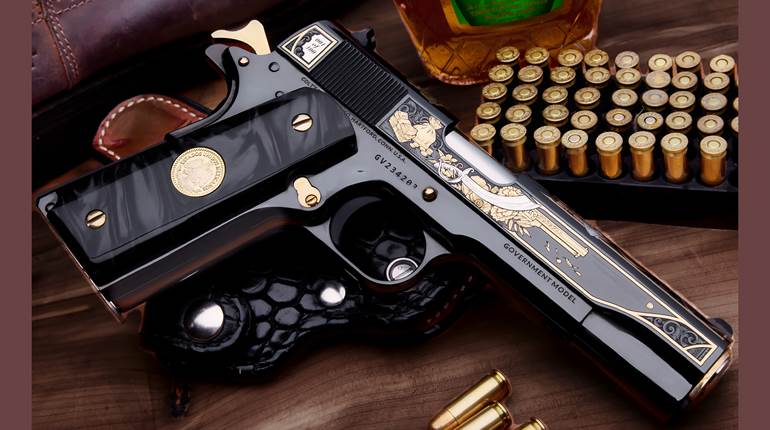
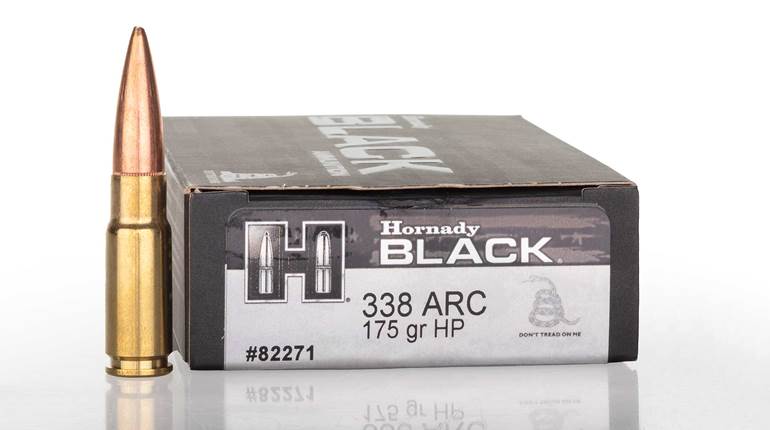


![Auto[47]](/media/121jogez/auto-47.jpg?anchor=center&mode=crop&width=770&height=430&rnd=134090788010670000&quality=60)

